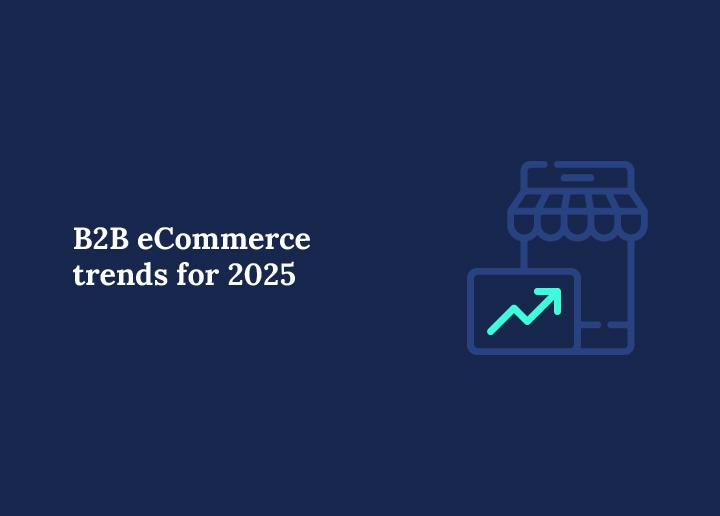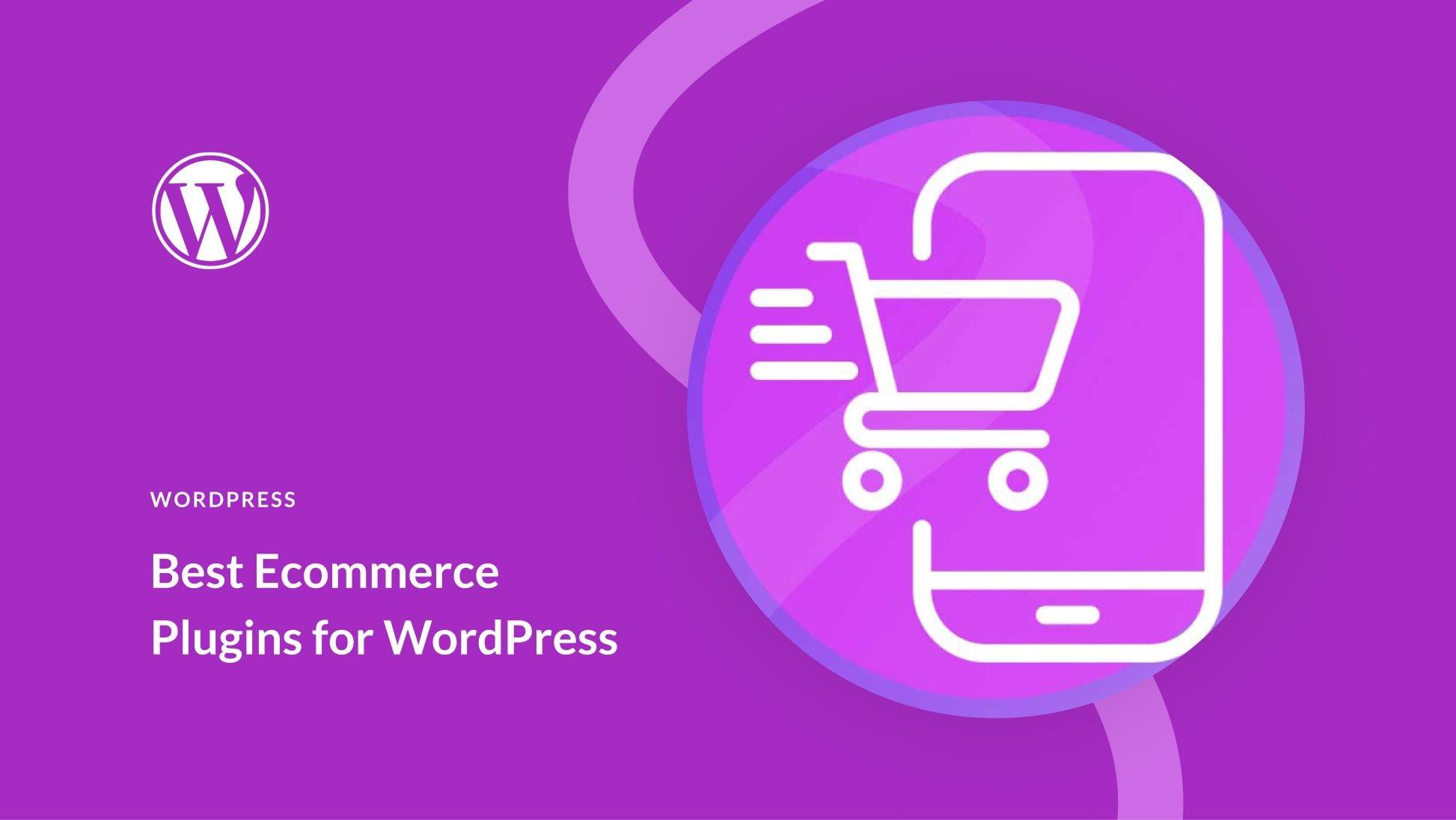In today’s fast-paced digital landscape, B2B eCommerce is evolving at lightning speed, and if you’re in the business world, you can’t afford to be left behind. Whether you’re a seasoned player or a newcomer trying to carve out your niche, understanding the trends shaping the future of digital commerce is crucial for staying competitive. From the rise of artificial intelligence to the growing importance of personalized customer experiences,these trends are not just fleeting fads—they’re transforming the way businesses connect,transact,and thrive in a digital-first economy. In this article, we’ll explore the top 10 B2B eCommerce trends that are revolutionizing the industry and offering insights on how you can harness them to elevate your business strategy. Ready to navigate the future of digital commerce? Let’s dive in!
Future-Proofing Your Business with Personalization strategies
The digital landscape is evolving rapidly, and businesses that want to stay ahead must adopt personalization strategies that resonate with their target audience. Personalization isn’t just a buzzword; it’s a necessity in today’s B2B ecommerce habitat. By tailoring experiences and communications to individual needs, companies can foster stronger relationships and drive conversions. Here are several key strategies to consider:
- Data-Driven Insights: Leverage analytics to understand customer behaviour and preferences. use this data to create segments and deliver personalized content that meets specific needs.
- Customized Recommendations: Implement AI-driven tools that suggest products based on past purchases or browsing history. This not only enhances the user experience but also encourages upselling and cross-selling.
- Dynamic Pricing Models: Consider offering personalized pricing based on customer loyalty, purchase frequency, or volume. This approach can incentivize larger orders and repeat business.
- Targeted Interaction: Use personalized email campaigns and marketing messages that speak directly to the recipient’s interests. Tailoring your communication can substantially improve engagement rates.
Moreover, integrating personalization into your ecommerce platform can lead to enhanced customer loyalty and retention. By creating unique user journeys that align with individual buyer personas, you not only make the buying process more enjoyable but also establish your brand as a trusted partner in their success. the long-term benefits are undeniable.
| Strategy | Benefit |
|---|---|
| Data-Driven Insights | Improved targeting and higher conversion rates |
| Customized Recommendations | Enhanced customer experience and increased sales |
| Dynamic pricing Models | Encouraged repeat business and larger orders |
| Targeted Communication | Increased engagement and brand loyalty |
To truly future-proof your business, it’s essential to embrace these personalization strategies holistically. This involves not only adopting new technologies but also fostering a company culture that prioritizes understanding and responding to customer needs. Ensure that your team is aligned with these goals, and invest in training that emphasizes the importance of customer-centric approaches.
As B2B ecommerce continues to grow and evolve, those that master the art of personalization will differentiate themselves from competitors. In a world where options are abundant, providing a tailored experience can be the deciding factor for potential customers. By focusing on personalization now, you lay the foundation for a sustainable and successful future in digital commerce.
Embracing the Power of AI in B2B Ecommerce
The integration of AI technologies in B2B ecommerce is revolutionizing how businesses operate, enabling them to streamline processes and enhance customer experiences. One of the most significant advantages of AI is its ability to analyze vast amounts of data quickly, providing insights that were previously unimaginable. By leveraging predictive analytics, companies can anticipate customer needs and preferences, ensuring they offer the right products at the right time.
Moreover, AI-powered chatbots are transforming customer service in the B2B space. These intelligent systems can handle inquiries 24/7, providing instant responses to common questions and freeing up human representatives for more complex issues. This not only improves response times but also increases customer satisfaction by offering a seamless interaction experience.
Another compelling application of AI is in personalized marketing. By tracking user behavior and preferences, businesses can craft tailored messages that resonate with individual clients. This level of personalization enhances engagement and fosters long-term relationships. Consider the following strategies:
- Dynamic content generation: AI can definitely help create personalized email campaigns that adjust based on user interactions.
- recommendation engines: Similar to those used by B2C companies, these can suggest relevant products based on previous purchases.
- Behavioral targeting: Analyzing browsing patterns allows for more accurate ad placements and promotions.
Moreover, AI enhances inventory management through demand forecasting. By analyzing past sales data and market trends, businesses can optimize their inventory levels, minimizing excess stock while ensuring enough availability to meet demand. This not only improves cash flow but also reduces storage costs, making operations more efficient.
As B2B ecommerce continues to evolve, companies must remain agile and open to embracing AI technologies. The businesses that harness this power will not only stay competitive but also position themselves as leaders in the digital commerce landscape. With AI, the future of B2B ecommerce is not just about transactions; it’s about creating a smarter, more responsive ecosystem that benefits both businesses and their clients.

Streamlining Operations with Automation technologies
In today’s fast-paced B2B landscape, efficiency is key to staying ahead of the competition. Automation technologies are revolutionizing how businesses operate, enabling them to streamline processes and enhance productivity. By adopting these innovative solutions, companies can eliminate repetitive tasks, reduce human error, and ultimately free up valuable resources for more strategic initiatives.
One of the most significant advantages of automation is its ability to optimize workflows across various departments.Consider how sales teams can benefit from automated lead generation and management. With tools that automatically capture and qualify leads, sales representatives can focus their efforts on nurturing relationships and closing deals rather than sifting through endless data. This shift not only increases sales efficiency but also improves the quality of customer interactions.
- Order processing: Automation can expedite order entry and fulfillment, ensuring timely delivery and enhanced customer satisfaction.
- Inventory Management: Automated systems provide real-time tracking of stock levels, reducing the risk of overstock or stockouts.
- Customer Support: AI-driven chatbots can handle common inquiries, freeing up human agents to address more complex issues.
Moreover, integrating automation with data analytics tools can uncover valuable insights that drive decision-making. Businesses can analyze customer behavior, sales trends, and market dynamics with greater precision, allowing for targeted marketing strategies and improved product offerings. Imagine having the ability to predict inventory needs or understand customer preferences in real-time—this level of insight can be a game-changer in the B2B sector.
| Automation Technology | Benefits |
|---|---|
| CRM Systems | Improved customer relationships and data management. |
| ERP Software | Streamlined operations and better resource planning. |
| Marketing Automation | Enhanced targeting and personalized campaigns. |
As automation technologies continue to evolve, the potential for operational efficiency grows exponentially. Businesses that embrace these changes position themselves not only to thrive in a competitive environment but also to provide unparalleled value to their customers. The question is,are you ready to harness the power of automation to transform your operations and drive growth?
Harnessing the Potential of Omnichannel Selling
In today’s fast-paced digital landscape,businesses are realizing the immense advantages of embracing an omnichannel selling strategy. By seamlessly integrating various channels, companies can create a cohesive shopping experience that not only attracts customers but also builds lasting relationships. Imagine a scenario where a client can interact with your brand via social media, your website, or even through email, and receive a consistent message at every touchpoint. This is the power of omnichannel selling.
One of the most significant benefits of this approach is the enhanced customer engagement.When businesses align their marketing efforts across all channels, they can tailor their messaging to meet the specific needs and preferences of their audience.This tailored communication leads to higher conversion rates as customers feel understood and valued. with the right tools, businesses can track customer interactions and preferences, enabling them to offer personalized experiences that resonate deeply.
Moreover, leveraging omnichannel selling can significantly boost sales. Customers today expect flexibility and convenience, wanting to browse, compare, and purchase products across multiple platforms. By providing a unified experience, businesses can tap into various shopping habits, ultimately increasing the likelihood of conversion. Some of the key features to consider include:
- Unified inventory Management: Ensure real-time updates across all channels to avoid stock discrepancies.
- Integrated Customer Support: Provide assistance across different platforms,enhancing customer satisfaction.
- Cross-Channel Promotions: create campaigns that are consistent and engaging, regardless of the channel.
To illustrate the impact of omnichannel selling, consider the following table showcasing the benefits:
| Benefit | Description |
|---|---|
| Increased reach | Access to more potential customers across different channels. |
| Improved Customer Insights | Gather data from multiple touchpoints to refine marketing strategies. |
| Higher Customer Loyalty | Consistent experiences foster trust and repeat business. |
as the digital commerce landscape continues to evolve, businesses that prioritize omnichannel selling will be well-positioned to thrive. With the right strategies in place, the potential for growth is not just achievable but certain. Embrace the change, harness the power of omnichannel, and watch as your brand transforms into a customer-centric powerhouse.

Building Trust Through Enhanced Security Measures
In an era where digital transactions have become the norm, the stakes for safeguarding sensitive business facts have never been higher. Companies that prioritize enhanced security measures not only protect their assets but also lay the groundwork for stronger relationships with their clients. trust is a currency in the B2B space; when buyers feel secure,they are more likely to engage and transact.
Investing in advanced security protocols demonstrates a commitment to protecting client data. Here are a few key measures that can significantly enhance security:
- Multi-factor Authentication (MFA): Adding an extra layer of protection makes it harder for unauthorized users to gain access.
- End-to-End Encryption: Ensures that data remains secure during transmission, keeping sensitive information private.
- Regular Security Audits: Routine assessments can identify vulnerabilities and help in strengthening the overall security framework.
Moreover, clarity regarding security practices can significantly bolster client trust. When businesses openly communicate their security protocols and incident response plans, it sends a strong message that they prioritize their clients’ well-being. This proactive approach not only reassures existing customers but also attracts new ones. It’s about creating an environment where clients feel safe to share their information.
Consider implementing a thorough security training program for your team. A well-informed workforce is crucial in maintaining security measures. By educating your employees about potential threats and best practices, you foster a culture of security that extends beyond your organization and into your client relationships.
To further illustrate the importance of security in B2B eCommerce, here’s a simple table showing the impact of security measures on customer trust:
| Security Measure | Impact on Trust |
|---|---|
| Data Encryption | High |
| Regular Audits | Medium |
| MFA Implementation | High |
| Transparency in Policies | Very High |
Ultimately, the future of B2B eCommerce hinges on the ability to build and maintain trust through robust security measures. By prioritizing these initiatives, businesses not only safeguard their operations but also pave the way for sustainable growth and lasting partnerships.

Understanding the Rise of Sustainable practices in B2B
The business landscape is undergoing a significant conversion as companies increasingly recognize the importance of integrating sustainability into their operations. This shift is not merely a trend but a fundamental change in how B2B organizations approach their procurement and supply chain strategies. As businesses strive to balance profit with planet, sustainable practices are becoming essential for gaining a competitive edge.
One of the key drivers behind this rise is the growing demand from consumers and stakeholders for transparency and accountability. Today’s businesses are under scrutiny, and failing to adopt sustainable practices can result in reputational damage and loss of customer trust. Companies are responding by implementing eco-friendly initiatives, such as:
- Reducing carbon footprints through energy-efficient operations.
- Utilizing sustainable materials in their products and packaging.
- Implementing circular economy principles to minimize waste.
Furthermore, embracing sustainability can lead to significant cost savings. By optimizing resource usage and reducing waste, businesses can lower operational expenses while also positioning themselves as responsible corporate citizens. This not only enhances their brand image but also attracts environmentally conscious partners and clients.
As organizations adopt sustainable practices, technology plays a crucial role in facilitating this transition. From supply chain management software to carbon footprint tracking tools, digital solutions are empowering businesses to monitor and improve their sustainability efforts effectively. The integration of these technologies enables B2B companies to:
- Analyze their supply chains for inefficiencies and improvement opportunities.
- Measure and report on sustainability metrics for better decision-making.
- Enhance collaboration with suppliers to achieve shared sustainability goals.
the rise of sustainable practices in B2B is reshaping how businesses operate and interact with one another. By prioritizing sustainability,companies not only contribute to a healthier planet but also foster resilience and innovation in an ever-evolving marketplace.

Leveraging Data Analytics for Informed Decision Making
In the ever-evolving landscape of B2B eCommerce, the ability to harness data analytics is becoming indispensable for businesses seeking to maintain a competitive edge. By analyzing customer behavior, market trends, and sales performance, companies can make decisions that are not just informed, but also strategic. This proactive approach allows businesses to anticipate market changes and adapt accordingly, rather than simply reacting to them.
To fully leverage data analytics, organizations should focus on several key areas:
- Customer Insights: Understanding customer needs and preferences through data can lead to personalized marketing strategies and improved customer experiences.
- Inventory Management: Analytics can help predict demand patterns, reducing excess inventory and ensuring that products are available when needed.
- Sales Forecasting: By analyzing historical sales data, businesses can create more accurate forecasts, allowing for better budgeting and resource allocation.
Moreover, integrating advanced analytics tools with existing platforms enables real-time data processing and visualization. This integration facilitates quicker response times to market shifts and enhances collaboration across different departments. Teams can work from a single source of truth, ensuring everyone is aligned and informed.
Additionally,embracing predictive analytics can be a game-changer. By utilizing algorithms that analyze past behaviors to forecast future outcomes, companies can identify potential opportunities and risks before they arise.this forward-thinking approach not only improves decision-making but also drives innovation in product development and customer engagement strategies.
To illustrate the power of data analytics, consider the following table showcasing common data points and their impact on decision making:
| Data Point | Impact on Decision Making |
|---|---|
| Customer Purchase History | Enables targeted marketing campaigns |
| Market Trends | Guides product development and inventory decisions |
| Website Analytics | Improves user experience through informed UI changes |
embracing data analytics is not just an option but a necessity for B2B eCommerce businesses aiming for growth and sustainability. The insights gathered from data can catalyze smarter decision-making processes, ultimately leading to increased efficiency and profitability in a competitive digital marketplace.

enhancing Customer Experience with Advanced UX Design
In today’s competitive B2B landscape, the customer experience has become a critical differentiator. Companies are beginning to realize that a seamless and engaging user experience can lead to higher conversion rates and increased customer loyalty. By leveraging advanced UX design principles, businesses can transform their digital platforms into user-friendly environments that facilitate easier navigation and more intuitive interactions.
Key strategies to enhance customer experience include:
- Personalization: Tailoring experiences based on user behavior and preferences can significantly boost engagement. By utilizing data analytics, businesses can present relevant products and content, making customers feel valued and understood.
- Responsive Design: With the rise of mobile commerce, having a responsive design is paramount. ensuring that websites and applications provide an optimal viewing experience across devices can reduce bounce rates and enhance user satisfaction.
- streamlined Navigation: Intuitive navigation is essential. When users can easily find what they are looking for, they are more likely to stay longer and explore further. Simplifying menus and using clear calls to action can guide users effectively.
- Customer Support Integration: Incorporating live chat or chatbots within the platform allows for instant assistance. speedy responses to queries can eliminate frustration and improve overall satisfaction.
Furthermore, utilizing visual hierarchy in UX design can significantly impact decision-making. By strategically placing important information, businesses can guide users towards desired actions, whether it’s completing a purchase or signing up for a newsletter.The use of whitespace, contrasting colors, and compelling imagery can draw attention to key areas, enhancing user engagement.
| UX Design element | Impact on Customer experience |
|---|---|
| Personalization | Increases engagement and conversion rates |
| Responsive Design | Enhances accessibility and user satisfaction |
| Simplified navigation | Reduces bounce rates and improves exploration |
| Integrated Support | Boosts user confidence and satisfaction |
Ultimately, investing in advanced UX design is not just about aesthetics; it’s about creating a holistic customer journey that resonates with users. By prioritizing the needs and preferences of customers, B2B ecommerce platforms can build deeper relationships and foster loyalty, paving the way for sustained growth and success in the digital commerce arena.

Adapting to Mobile-First Commerce Trends
As mobile devices become increasingly integral to business operations, companies must recognize the shift towards mobile-first commerce strategies. This trend isn’t just a passing phase; it’s a fundamental change that reshapes how businesses engage with their customers and streamline their operations.
With the majority of professionals now completing tasks on their smartphones, optimizing the mobile experience is critical. Companies should focus on creating responsive designs that adapt seamlessly to any device. Here are some key areas to consider:
- Intuitive Navigation: Simplifying menus and making information easily accessible is crucial for keeping users engaged.
- Fast Load times: Mobile users expect pages to load in a matter of seconds. Optimize images and streamline code to enhance performance.
- Mobile Payment Options: Implementing digital wallets and one-click payments can significantly improve conversion rates.
Additionally, integrating personalization into mobile commerce can drive deeper customer relationships. By using data analytics to tailor content and offerings based on user behavior, businesses can create targeted marketing campaigns that resonate with their audience. For example, sending push notifications about relevant promotions can effectively encourage purchases directly through mobile devices.
Furthermore, leveraging social media platforms for mobile commerce is becoming increasingly effective. With the rise of social selling, businesses can showcase products directly on platforms like Instagram and Facebook, allowing users to shop without ever leaving their favorite apps. This strategy not only broadens reach but also enhances customer engagement.
| Mobile Commerce Strategies | Impact on B2B Transactions |
|---|---|
| Responsive Web Design | Improves user experience and lowers bounce rates |
| Mobile Payments | Streamlines purchasing process and increases sales |
| Personalized Marketing | Enhances customer loyalty and boosts engagement |
| Social Commerce | Expands market reach and drives direct sales |
embracing mobile-first commerce is not merely an option for businesses; it’s a necessity for staying competitive in today’s digital landscape. by implementing thoughtful strategies that prioritize the mobile experience, companies can not only enhance customer satisfaction but also drive remarkable growth. The future of B2B ecommerce is undeniably mobile,and those who adapt will thrive.

Exploring the Impact of Social Commerce on B2B Transactions
Social commerce is redefining the landscape of B2B transactions, integrating social media platforms with e-commerce strategies to create a seamless buying experience. This transformation allows businesses to engage directly with their customers, fostering relationships that go beyond mere transactions. By leveraging social networks, companies can not only promote their products but also gather invaluable insights into customer preferences and behavior.
One of the most significant impacts of social commerce on B2B transactions is the ability to enhance visibility. Businesses can showcase their offerings to a broader audience through platforms like LinkedIn,Facebook,and Instagram. This increased visibility helps companies to reach potential clients in a more organic manner, as recommendations and referrals become more commonplace. When buyers see products endorsed by their peers or industry leaders, their trust and confidence in those products grow exponentially.
Moreover,the integration of user-generated content plays a crucial role in influencing purchasing decisions. Reviews, testimonials, and case studies shared on social platforms not only validate a company’s credibility but also provide social proof that can be more persuasive than customary marketing methods. This shift towards valuing customer experiences is reshaping how B2B companies communicate their value proposition.
The rise of social commerce also paves the way for personalized marketing strategies. Businesses can use data analytics to tailor their offerings based on specific customer interactions on social media. By analyzing engagement metrics, companies can refine their marketing messages, ensuring they resonate with their target audience. This level of personalization fosters stronger connections and leads to higher conversion rates.
| Social Commerce Advantages | Impact on B2B Transactions |
|---|---|
| Increased reach | Access to a wider audience, leading to more leads and sales. |
| Enhanced Trust | Peer recommendations boost buyer confidence and loyalty. |
| Real-Time Engagement | Immediate feedback and interaction can accelerate the sales cycle. |
| Data-driven insights | Analytics help refine marketing efforts and product offerings. |
as social commerce continues to evolve, its influence on B2B transactions will only grow stronger. Companies that adapt to these changes and harness the power of social platforms will not only survive but thrive in this dynamic digital landscape. By embracing social commerce, businesses can drive engagement, build trust, and ultimately increase sales in an ever-competitive market.
Frequently Asked Questions (FAQ)
Q&A on “10 B2B Ecommerce Trends Shaping the Future of Digital Commerce”
Q: Why should businesses care about the trends in B2B eCommerce?
A: Absolutely, understanding these trends is crucial! The B2B landscape is rapidly evolving, and businesses that stay ahead of the curve can gain a significant competitive advantage. These trends not only reflect the changing preferences of buyers but also highlight technological advancements that can streamline operations and enhance customer experience. Ignoring them can mean missing out on opportunities for growth and efficiency.
Q: What are some of the key trends shaping B2B eCommerce right now?
A: Great question! Some of the most impactful trends include the rise of AI and machine learning for personalized marketing,an increased focus on mobile commerce,and the integration of advanced analytics for data-driven decisions. Additionally, we’re seeing more businesses adopting subscription models and marketplaces as they become more popular. Each of these trends offers unique ways for businesses to connect with customers and improve sales.
Q: How is artificial intelligence changing the B2B eCommerce landscape?
A: AI is a game-changer! It helps businesses analyze vast amounts of data to provide personalized experiences for their customers. For example, AI can recommend products based on past purchases or browsing behavior, making the shopping experience smoother and more engaging. It also enhances customer service through chatbots, which can handle inquiries 24/7, ensuring that businesses can support their clients at any time.
Q: Mobile commerce seems to be everywhere these days. Why is it notably important for B2B?
A: Mobile commerce is essential because B2B buyers are becoming more like B2C consumers—they want the convenience of shopping from anywhere, at any time. Many decision-makers are often on the go, and if your eCommerce platform isn’t mobile-friendly, you risk losing potential sales. An optimized mobile experience can lead to higher engagement rates and ultimately, more conversions.
Q: What role do analytics play in shaping B2B eCommerce strategies?
A: Analytics are incredibly powerful! They enable businesses to track customer behavior, understand market trends, and make informed decisions. By leveraging data, companies can refine their marketing strategies, optimize pricing, and even manage inventory more effectively. Essentially, analytics turn raw data into actionable insights, helping businesses make smarter moves in a competitive market.
Q: Are subscription models really the future for B2B eCommerce?
A: Definitely! Subscription models offer predictable revenue streams and foster long-term customer relationships. They provide convenience for clients,who appreciate the ease of regular shipments without needing to reorder. As businesses become accustomed to this model, we’ll likely see more companies exploring subscription options to enhance customer loyalty and lifetime value.
Q: How can businesses prepare for these trends?
A: Businesses should start by conducting a thorough analysis of their current eCommerce strategy. Look at your technology stack—are you using the latest tools? Invest in training your team on new technologies and customer engagement strategies. And most importantly, stay informed! Regularly review industry reports and adapt your strategies accordingly to ensure you remain competitive as these trends continue to evolve.
Q: What’s the biggest takeaway for companies looking to succeed in B2B eCommerce?
A: the biggest takeaway is to prioritize adaptability. The B2B eCommerce landscape is changing rapidly, and companies that are willing to innovate and embrace new technologies will thrive. Keeping a finger on the pulse of these trends allows businesses to not only meet the demands of today’s buyers but also anticipate future needs, establishing themselves as leaders in the market. Remember, it’s not just about keeping up—it’s about staying ahead!
Wrapping Up
As we wrap up our exploration of the ten B2B eCommerce trends shaping the future of digital commerce, it’s clear that staying ahead of the curve is more important than ever. Whether it’s harnessing the power of AI, embracing the omnichannel approach, or prioritizing sustainability, these trends are not just buzzwords; they represent the evolving landscape that businesses must navigate to thrive.So, what does this mean for you? It’s time to take action! Evaluate your current strategies, align with these trends, and don’t hesitate to innovate. Remember, the digital commerce arena is rapidly changing, and the businesses that adapt will not only survive but excel.
If you’re ready to lead in this dynamic environment, now is the moment to dive in and implement these insights. Your competitors are already making moves—don’t let them get ahead! Embrace these trends, connect with your customers in meaningful ways, and position your business for success in the future of B2B eCommerce.
Thank you for joining us on this journey! Keep the conversation going, and let’s shape the future of digital commerce together. What trend are you most excited about? Share your thoughts in the comments below!




